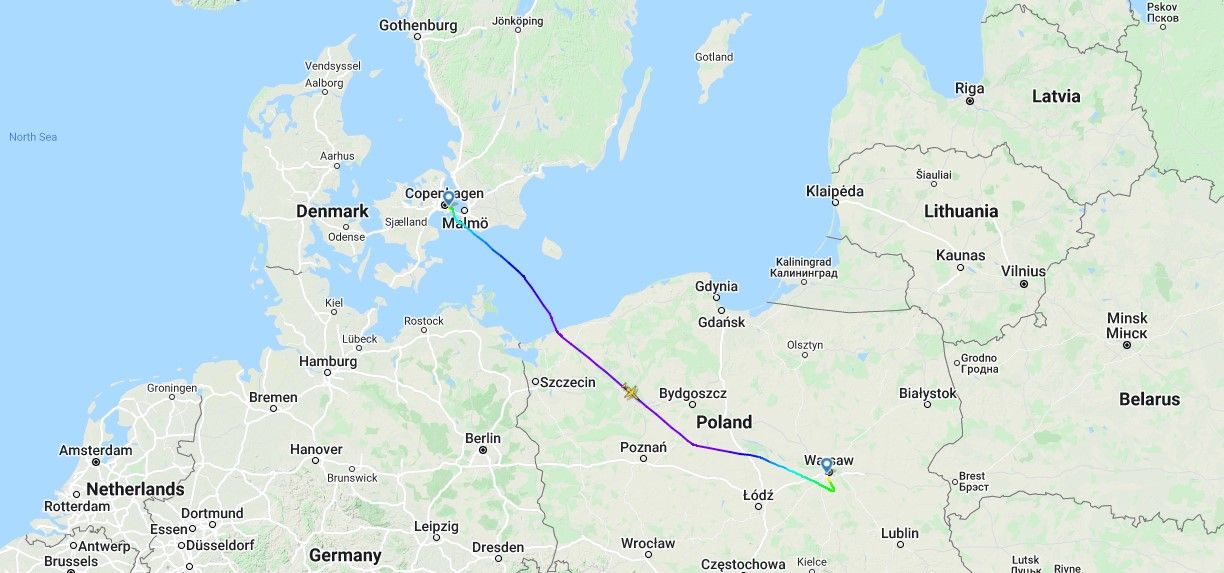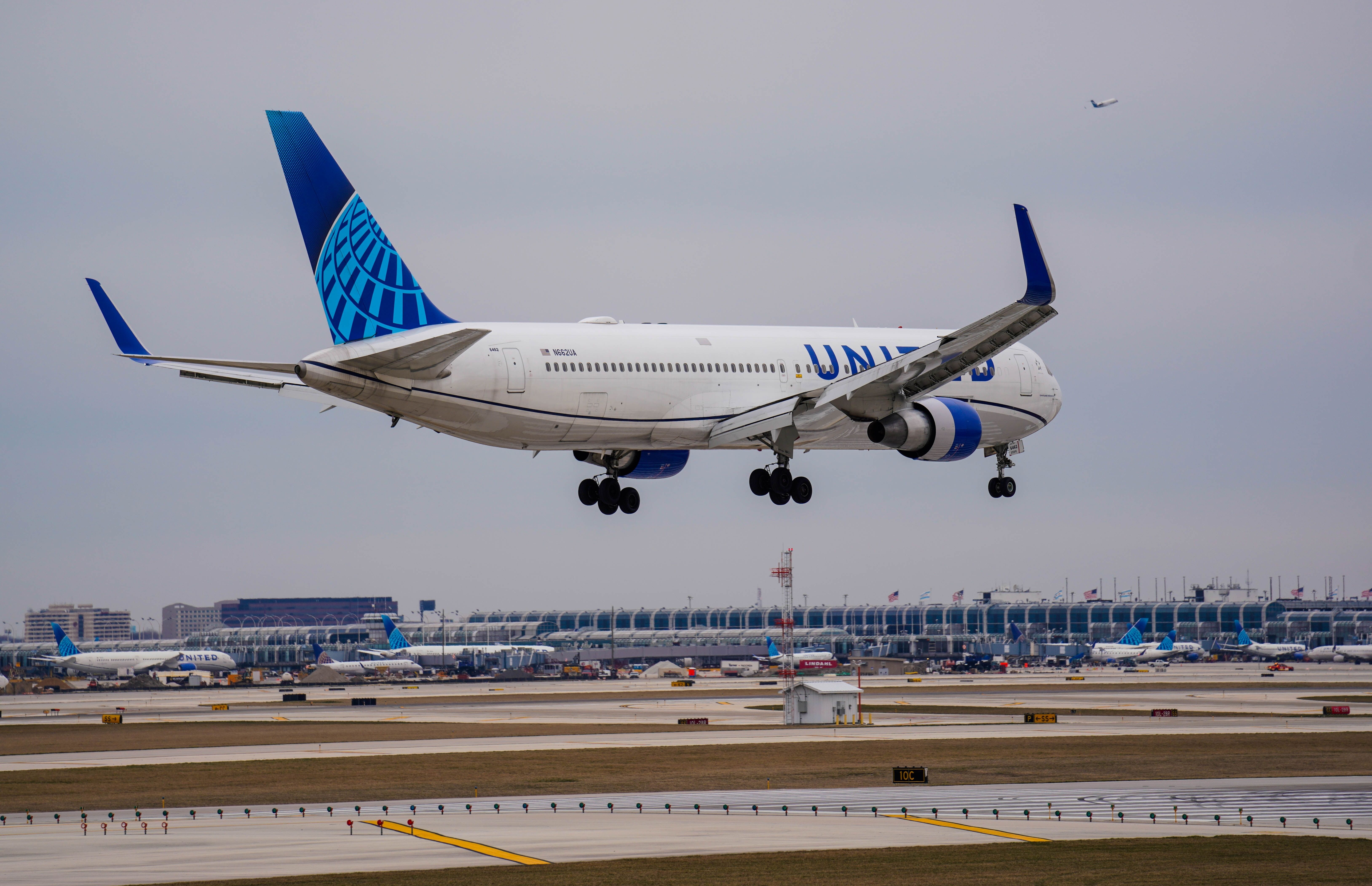In December 1991, a Scandinavian Airlines System McDonnell Douglas MD-81 crashed in a field after leaving Stockholm. The jet was downed by a dual engine failure caused by the ingestion of ice, which had gathered on the wings, into the engines. Despite the perilous situation, there were no fatalities due to the accident.
The flight and aircraft in question
Scandinavian Airlines flight SK751 was a scheduled passenger-carrying service that originated at Stockholm Arlanda (ARN). The Swedish capital is one of three main hubs for SAS, which is the flag carrier of Denmark, Norway, and Sweden. The flight's first stop was another one of these hubs, namely Copenhagen Kastrup (CPH).
After pausing in the Danish capital, the flight's second and final destination was Warsaw Chopin (WAW), the busiest airport in Poland. As seen in the map below, SAS continues to operate flight SK751 today, albeit only from Copenhagen to Warsaw. Direct services from Stockholm are reportedly set to resume in May this year.
The aircraft operating flight SK751 on December 29th, 1991 was a McDonnell Douglas MD-81 registered as OY-KHO. It bore the name Dana Viking, and, according to data from ATDB.aero, it had joined SAS brand-new in April that year. The Aviation Safety Network notes that there were 122 passengers and seven crew onboard.
An icy catastrophe
The aircraft departed Stockholm at 08:47 local time on the morning of the crash. However, by this point, it was already doomed to crash by a sequence of events in the hours before its takeoff. This began the previous evening, when it arrived from Zürich at 22:09. It remained parked at the gate overnight, at temperatures just above freezing, with around 2550 kg of fuel in the wing tanks.
These conditions meant that clear ice formed on the tops of the wings, the presence of which was missed during the pre-flight de-icing procedure. As such, it remained in place until just after the aircraft took to the air. It was at this point that chunks of the clear ice fell from the wings and were ingested by the MD-81's rear-mounted engines. This prompted a series of surges.
Eventually, just over a minute into the flight, both engines failed at an altitude of just over 3,000 feet. The pilots subsequently requested to return to Arlanda while attempting to restart the engines. They also decided to briefly pitch the aircraft down, before leveling off in an attempt to gain more speed for the ensuing glide.
Stay informed: Sign up for our daily and weekly aviation news digests.
A miraculous landing
The jet couldn't make it back to Arlanda, so the crew opted to land in a field in nearby Gottröra. Despite hitting trees while descending, causing the plane to lose part of its right wing and touch down tail-first, all 129 occupants survived the crash. 25 were injured (two seriously), but the fatality-free ending caused it to become known in Sweden as the Miraklet i Gottröra ('Miracle At Gottröra).
The flight's crew was widely lauded for their actions under the circumstances, with the actions of both the pilots and cabin crew having contributed to there being no fatalities. Following the crash, the nine-month-old aircraft was understandably a write-off. The captain, Stefan Rasmussen, retired from flying shortly afterward, and has since pursued careers in politics and music.
What do you make of this accident? Did you ever fly on one of SAS's MD-81s? Let us know your thoughts and experiences in the comments.
Source: Aviation Safety Network

_OY-KHO_KvW-1.jpg)




